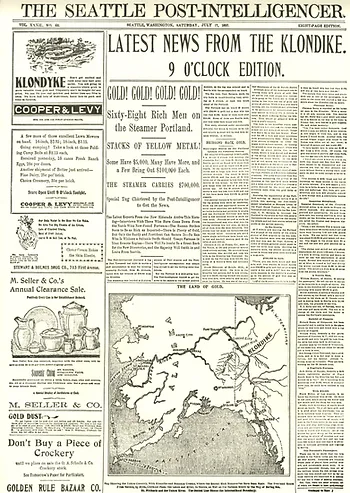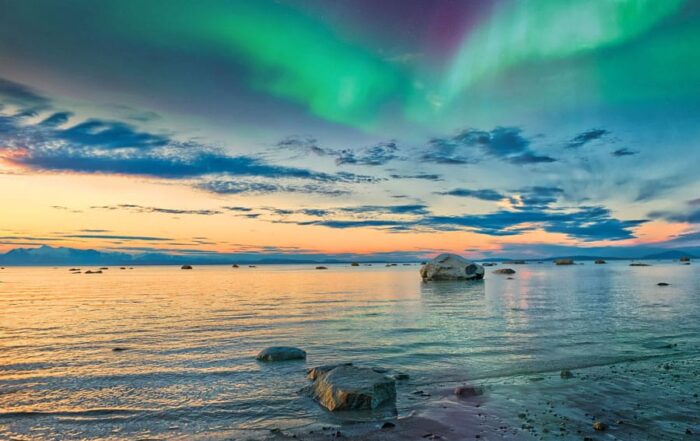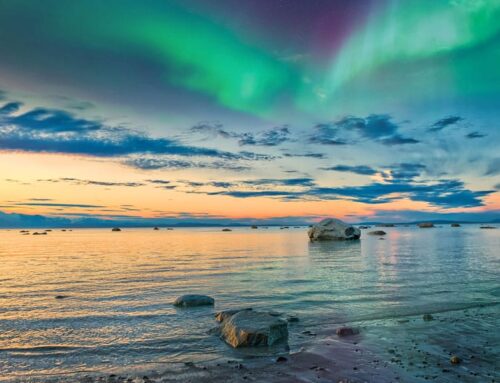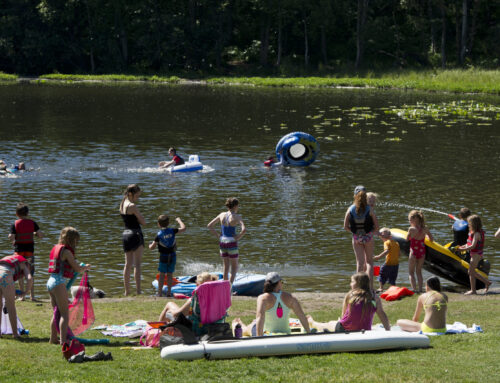The Perilous Voyage of the Clara Nevada
The Alaska Gold Rush wouldn’t be fully told without a touch of mystery. Every gold rush has its eerie moments, and the Alaska Gold Rush was no exception. Among its perplexing tales, one stands out—the saga of the Clara Nevada. This story is steeped in greed, theft, murder, and even a ghostly presence. However, it’s more than that; it’s a tale of one of the most significant successful heists in American history, coupled with the third-largest mass killing in American history, surpassed only by the Oklahoma City bombing in 1995 and the attack of 9/11 on the World Trade Center.
In life, the Clara Nevada was unremarkable, but in death, it achieved immortality. Originally built in 1872 as a survey vessel for the United States Coast and Geodetic Survey (USGS), it was named the Hassler, honoring Ferdinand Hassler, the first USGS Superintendent. The ship served in Alaska for over two decades, surveying the coastline. When it outlived its usefulness, it faced scrapping. However, fate had other plans. In 1897, the Klondike Gold Rush began, and the Pacific & Alaska Transportation Company purchased the Hassler for $15,700, just before it could be dismantled. Based in Portland, the Pacific & Alaska Transportation Company was one of the numerous companies capitalizing on the demand for transportation to the gold fields of the north. Their business model was simple: cash-paying passengers went north, while Argonauts laden with gold dust and nuggets paid for their passage south in cash. If you couldn’t pay, you couldn’t board.
 The Clara Nevada’s maiden voyage was marred by incidents, including a collision with the Revenue Cutter Grant and a collision with a dock in Port Townsend. However, her return journey south on February 5, 1898, would etch her name in history. On that fateful night, during a severe storm, a witness in Seward City saw a ship on fire near Eldred Rock (now a lighthouse). Suddenly, there was an orange fireball on the water, followed by darkness. It was presumed that the ship had exploded, but the storm prevented any immediate investigation. A week later, the steamer Rustler reported a wreck on a reef off Eldred Rock. Only the ship’s spars were visible at low tide, making positive identification impossible. The Rustler recovered one body, identified as George Foster Beck, the Clara Nevada’s purser. With no passenger list, it was unclear how many perished. Recriminations began, investigations into the earlier collision intensified, and passengers from the previous voyage shared stories of incompetence, intoxication, and unseaworthiness.
The Clara Nevada’s maiden voyage was marred by incidents, including a collision with the Revenue Cutter Grant and a collision with a dock in Port Townsend. However, her return journey south on February 5, 1898, would etch her name in history. On that fateful night, during a severe storm, a witness in Seward City saw a ship on fire near Eldred Rock (now a lighthouse). Suddenly, there was an orange fireball on the water, followed by darkness. It was presumed that the ship had exploded, but the storm prevented any immediate investigation. A week later, the steamer Rustler reported a wreck on a reef off Eldred Rock. Only the ship’s spars were visible at low tide, making positive identification impossible. The Rustler recovered one body, identified as George Foster Beck, the Clara Nevada’s purser. With no passenger list, it was unclear how many perished. Recriminations began, investigations into the earlier collision intensified, and passengers from the previous voyage shared stories of incompetence, intoxication, and unseaworthiness.
The Clara Nevada became a political battleground as well, with Col. Alden J. Blethen of the Seattle Times using the incident to attack the Steamboat Inspection Service and the Republican administration. The city’s reputation suffered as it became known for “decrepit and unsafe ships.” The controversy persisted until August 1898 when it was concluded that a fire had started onboard. During the frantic firefighting, control of the ship was lost, and it ran aground on Eldred Rock, breaking apart. Evidence included fire hoses found on the ship’s deck, suggesting a fire had occurred.
 Despite the controversy, the gold rush continued, and more ships sank in the Inside Passage. Eventually, the Clara Nevada was forgotten as just another ship lost at sea. However, it had a remarkable resurrection. A decade later, a hurricane-force gale exposed the ship on Eldred Rock. The lighthouse keeper witnessed the spectacle but the storm soon reclaimed the vessel.
Despite the controversy, the gold rush continued, and more ships sank in the Inside Passage. Eventually, the Clara Nevada was forgotten as just another ship lost at sea. However, it had a remarkable resurrection. A decade later, a hurricane-force gale exposed the ship on Eldred Rock. The lighthouse keeper witnessed the spectacle but the storm soon reclaimed the vessel.
In 1916, a diver explored the wreck and salvaged copper and brass. Contradicting the fireball theory, he believed the wreck resulted from something else, possibly a submerged rock. This contradicted a witness who swore he saw a fireball. Questions arose about the ship’s cargo of untraceable gold, estimated at around $165,000. Multiple sources reported varying amounts, but the gold was never recovered.
Several theories emerged, including the possibility of kerosene fires caused by overturned lamps. Despite claims of dynamite onboard, questions remained about its purpose and why it didn’t cause the ship to disintegrate. One intriguing revelation was that the Clara Nevada’s captain, believed to have perished, was found working as a steamship captain on the Yukon River 18 months later. The ship’s final resting place, in shallow water atop a submarine mountain, raised suspicions of a deliberate sinking for later plunder. The Clara Nevada remains an unsolved cold case and stands as America’s largest robbery and the third-largest mass murder in its history. It serves as a grim reminder that acquiring gold was often less perilous than getting it back home.
Photos courtesy of Alaska Magazine, National Park Service and National Underwater and Marine Agency.









